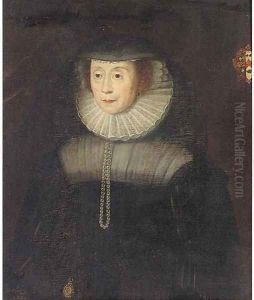Nicholas Maes Paintings
Nicholas Maes was a prominent Dutch Golden Age artist, born in Dordrecht, Netherlands, in 1634. He is best known for his genre scenes, portraits, and religious narratives. Maes was one of Rembrandt's most gifted pupils, studying under him in Amsterdam in the early 1650s. His early works bear a strong resemblance to the style of his master, characterized by their dramatic use of light and shadow, and deeply emotional religious themes. However, as his career progressed, Maes developed a more personal style, especially noted in his genre paintings and portraits.
After his apprenticeship with Rembrandt, Maes returned to his hometown of Dordrecht for a brief period before settling in Amsterdam. During the 1650s and 1660s, Maes' work focused on domestic scenes, often featuring women engaged in household tasks. These paintings are remarkable for their intimate atmosphere and attention to detail, elements that highlight Maes' keen observation of everyday life. His genre scenes are imbued with a sense of quietude and moralizing themes, reflecting the Calvinist ethos of the Dutch Republic.
In the latter part of his career, Maes turned increasingly to portrait painting, becoming one of the leading portraitists in Amsterdam. His portraits are distinguished by their elegance and the psychological depth he brought to his depictions of sitters. Unlike his early work, which was heavily influenced by Rembrandt's dramatic chiaroscuro, Maes' later portraits exhibit a lighter palette and a more refined use of light, aligning with the evolving tastes of his clientele.
Nicholas Maes' contribution to Dutch art is significant, bridging the gap between the Baroque intensity of Rembrandt's influence and the more genteel and polished approach of the later Dutch Golden Age. He died in Amsterdam in 1693, leaving behind a body of work that continues to be appreciated for its insight into 17th-century Dutch society, its technical mastery, and its emotional depth. Maes' legacy is preserved in major museums around the world, where his works continue to captivate audiences with their beauty and historical significance.
